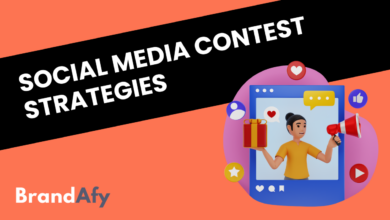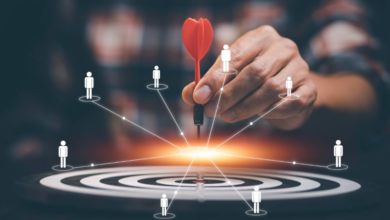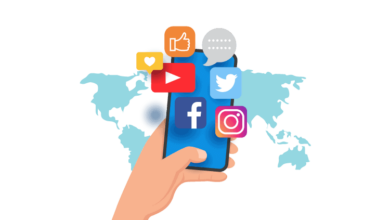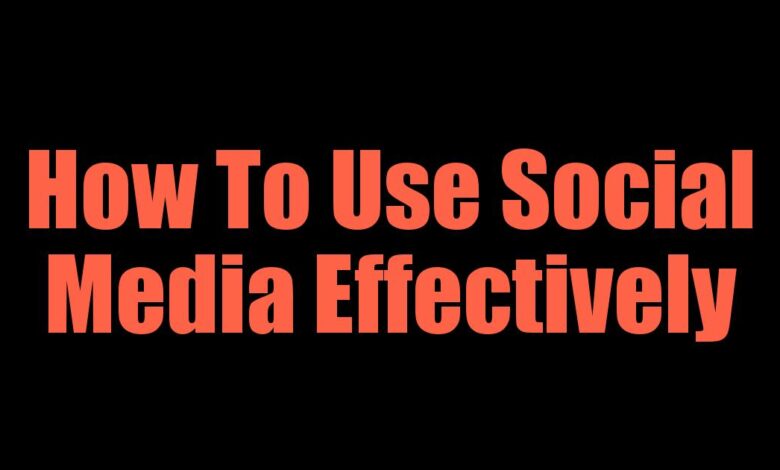
Live Social Media the Right Way
Live social media right way – Live Social Media the Right Way: Want to ditch the awkward silences and low engagement on your live streams? This isn’t just about going live; it’s about crafting a truly engaging experience that connects with your audience and boosts your brand. We’ll dive into everything from pre-stream planning and audience interaction to post-stream analysis and avoiding common pitfalls.
Get ready to transform your live social media strategy!
From choosing the perfect platform to mastering the art of real-time engagement, we’ll cover all the essential steps to make your live streams a resounding success. Think of this as your ultimate guide to maximizing your reach, building stronger relationships with your followers, and achieving your marketing goals through the power of live video.
Defining “Live Social Media the Right Way”
Live social media, when done effectively, transcends simple broadcasting; it fosters genuine connection and engagement with your audience. It’s about creating a dynamic, interactive experience that leaves viewers feeling valued and informed, ultimately driving brand loyalty and business results. This isn’t just about showing up; it’s about showing up – right*.Effective live social media engagement is a multifaceted process, requiring careful planning and execution.
It’s about strategically leveraging the unique capabilities of live video to build relationships, increase brand awareness, and achieve specific marketing goals. It necessitates a deep understanding of your target audience, their preferences, and the platform you choose to utilize. The success of a live stream isn’t measured solely by viewership, but by the quality of interaction, the value delivered, and the lasting impact it has on your audience.
Key Elements of a Successful Live Stream
A successful live stream hinges on several crucial components. First, a well-defined purpose is essential. Knowing your objectives—whether it’s product promotion, community building, or crisis communication—shapes the content and approach. Second, high-quality audio and video are paramount. Poor production value can significantly detract from the viewer experience.
Third, engaging content that keeps viewers hooked is critical. This could involve interactive elements, Q&A sessions, or demonstrations. Fourth, promotion before, during, and after the stream is key to maximizing reach. Finally, post-stream analysis is crucial to understand what worked and what didn’t, informing future efforts.
Live Streaming Platforms and Audience Suitability
Different platforms cater to different audiences and purposes. Facebook Live, for example, is excellent for reaching a broad, established audience due to its massive user base. Instagram Live is ideal for younger demographics and visually-driven content, leveraging the platform’s focus on imagery and short-form video. YouTube Live, on the other hand, is perfect for longer-form content, tutorials, and events, benefiting from its robust video infrastructure and established community.
Twitter Spaces is best for audio-based conversations and quick discussions. The choice of platform depends on your target audience and the nature of your content. For instance, a cooking demonstration might thrive on Instagram Live, while a political discussion could be more suitable for YouTube Live or Twitter Spaces.
Checklist for Evaluating Live Social Media Strategy Effectiveness
Before launching a live social media campaign, and after its completion, a thorough evaluation is crucial. This checklist helps assess the success of your strategy:
- Clearly Defined Goals: Were your pre-defined objectives (e.g., increased brand awareness, lead generation, sales) met?
- Audience Engagement: Analyze metrics like comments, shares, likes, and overall viewer interaction. Were viewers actively participating?
- Reach and Impressions: How many unique viewers did you reach? What was the total number of impressions?
- Platform Suitability: Did you choose the right platform to reach your target audience?
- Content Quality: Was the audio and video quality high? Was the content engaging and informative?
- Promotion Effectiveness: Did your pre-stream promotion generate sufficient interest and viewership?
- Post-Stream Analysis: Did you analyze the data to understand what worked and what didn’t?
Pre-Live Stream Planning and Preparation
Going live on social media isn’t just about hitting the “go live” button; it’s about meticulous planning and preparation. A successful live stream requires a strategic approach, encompassing technical readiness, engaging content, and a robust promotional plan. Ignoring these crucial steps can lead to a lackluster performance and missed opportunities to connect with your audience. This section will delve into the essential elements of pre-live stream planning.
Effective pre-live stream preparation is the foundation for a successful broadcast. It involves a detailed checklist covering technical setup, content strategy, and audience engagement tactics. By carefully planning and preparing, you significantly increase the likelihood of a smooth, engaging, and impactful live stream experience for both you and your viewers.
Pre-Live Stream Checklist
A comprehensive checklist ensures you’ve covered all bases before going live. This checklist is designed to be adaptable to different live stream formats and platforms.
- Technical Aspects: Test your internet connection, microphone, camera, lighting, and streaming software. Ensure all devices are fully charged or connected to power.
- Content Planning: Define your live stream topic, create an Artikel or script, and prepare any visuals or presentations.
- Audience Engagement: Plan interactive elements like Q&A sessions, polls, or challenges. Prepare responses to anticipated questions or comments.
- Promotional Strategy: Schedule promotional posts across your social media channels, email list, and website. Include a clear call to action (e.g., “Join us live!”).
- Post-Live Plan: Determine how you will share a recording or highlights of the live stream after it concludes.
- Backup Plan: Have a backup plan in case of technical difficulties, such as an alternative streaming platform or a pre-recorded segment.
Selecting Appropriate Live Stream Topics and Formats
The choice of topic and format directly impacts viewer engagement. Understanding your target audience’s interests and preferences is crucial for selecting a successful live stream format.
- Target Audience Analysis: Research your audience demographics, interests, and online behavior to tailor your content accordingly. For example, a younger audience might respond better to shorter, more informal live streams, while a professional audience may prefer a more structured presentation.
- Format Selection: Consider various formats such as tutorials, Q&A sessions, product demonstrations, behind-the-scenes glimpses, interviews, or live events. The format should align with your topic and audience preferences.
- Topic Relevance: Choose a topic that is timely, relevant, and engaging for your audience. Consider current events, trending topics, or questions frequently asked by your audience.
Sample Promotional Strategy
A robust promotional strategy is essential for maximizing pre-live stream engagement. The goal is to generate excitement and encourage viewers to tune in.
- Announce the Live Stream: Create engaging social media posts, email newsletters, and website announcements to inform your audience about the upcoming live stream. Include details such as date, time, topic, and platform.
- Utilize Visuals: Use eye-catching images or videos in your promotional materials to grab attention and create excitement. A visually appealing promotional graphic can significantly improve engagement.
- Engage with Your Audience: Interact with comments and questions on your promotional posts to build anticipation and encourage participation.
- Run Contests or Giveaways: Consider offering incentives such as a discount code or a free product to viewers who participate in the live stream. This can significantly boost participation.
- Collaborate with Influencers: Partnering with relevant influencers can significantly broaden your reach and attract a new audience to your live stream.
Setting Up the Technical Aspects of a Live Stream
Technical setup is crucial for a professional and engaging live stream. Proper lighting, audio, and camera angles contribute to a high-quality viewing experience.
- Lighting: Use soft, diffused lighting to avoid harsh shadows and ensure even illumination of your face and surroundings. Experiment with different light sources and positions to find what works best for your setup. Avoid backlighting, which can make you appear dark and silhouetted.
- Audio: Use a high-quality microphone to ensure clear and crisp audio. A lavalier microphone clipped to your shirt or a USB microphone placed close to your mouth will provide superior audio quality compared to your computer’s built-in microphone. Minimize background noise as much as possible.
- Camera Angles: Experiment with different camera angles to find the most flattering and engaging perspective. A slightly elevated angle can be more flattering, while a lower angle can make you appear more powerful. Avoid extreme close-ups or wide shots that make you appear too small or distant.
Engaging with Your Audience During the Live Stream
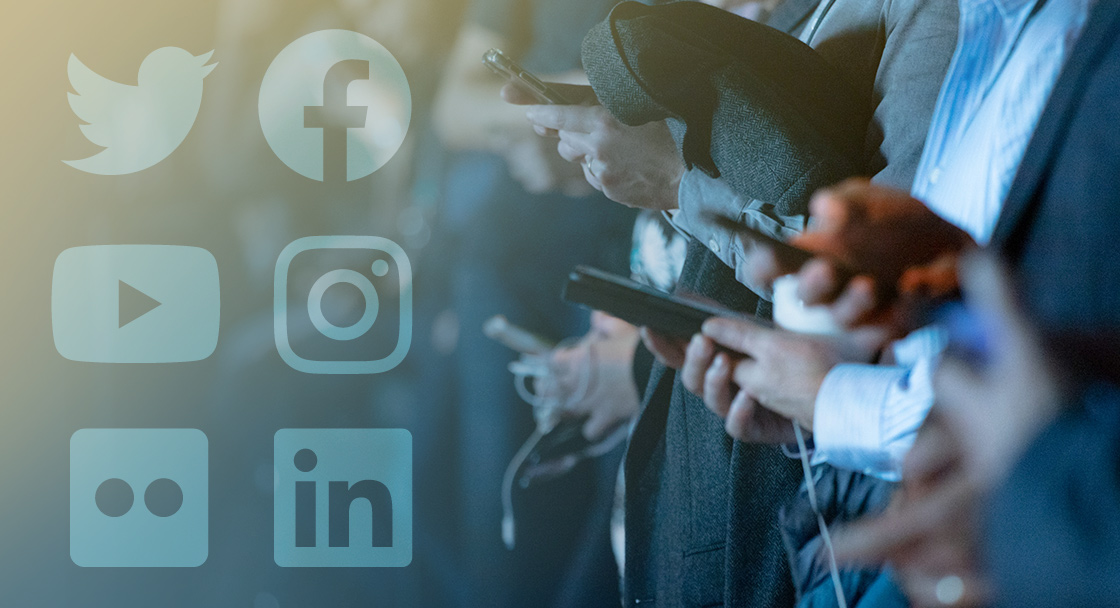
Source: firstpagemarketing.com
So you want to nail live social media? It’s all about authentic engagement, and a key part of that is building a strong presence on other platforms. Check out this great guide on getting it on with youtube to learn how YouTube can boost your live streams and overall social media strategy. Ultimately, consistent, high-quality content across all your channels is the best way to connect with your audience and make a real impact.
Live streaming isn’t just about broadcasting; it’s about creating a two-way conversation. A truly successful live stream hinges on your ability to engage your audience, making them feel heard, valued, and part of the experience. This involves proactive planning and a genuine desire to interact.Effective audience engagement during a live stream dramatically increases viewer retention, brand loyalty, and the overall success of your broadcast.
It transforms a one-way broadcast into a vibrant community interaction. Ignoring your audience will result in low viewership, limited reach, and missed opportunities for valuable feedback.
Interactive Elements During the Live Stream
Strategic use of interactive elements transforms a passive viewing experience into an active participation. Think of these tools not just as features, but as opportunities to build connections with your audience and deepen their understanding of your brand or message. These interactive elements should be planned beforehand, integrated seamlessly into the flow of your stream, and chosen based on your audience and the nature of your content.
Managing and Responding to Comments and Questions in Real-Time
Responding to comments and questions promptly is critical for maintaining a dynamic and engaging live stream. It shows your audience that you value their input and are actively listening. A simple “Thanks for the question, great point!” or a more detailed answer depending on the question’s complexity, goes a long way. Prioritize questions that are relevant to the topic at hand and address as many as possible within the timeframe.
Don’t be afraid to acknowledge that you might not know the answer to every question and promise to follow up later. For example, if a complex technical question arises, you could say, “That’s a great question! It requires a bit more in-depth explanation than we have time for right now, but I’ll be sure to create a blog post or video addressing it in detail afterwards.”
Maintaining Audience Engagement Throughout the Entire Live Stream
Keeping your audience engaged for the duration of the stream requires a well-structured plan and a dynamic approach. Varying the pace and format of your content is essential. For instance, you could alternate between demonstrations, Q&A sessions, polls, and behind-the-scenes glimpses. Keeping your energy levels high and showing genuine enthusiasm is also crucial. Imagine a live stream about cooking; you could start with a recipe overview, then move to a live cooking demonstration, followed by a Q&A where viewers can ask about specific techniques or ingredient substitutions, and finally, a quick poll asking viewers to vote on their favorite part of the recipe.
Handling Negative or Critical Comments During a Live Stream
Negative comments are inevitable in live streams. The key is to handle them professionally and constructively. Ignoring them can make the situation worse; addressing them with respect and understanding can turn a potential negative into a positive. For example, if someone posts a critical comment, you could acknowledge their viewpoint by saying something like, “I appreciate you sharing your perspective.
While I understand your concern, I’d like to clarify…” and then proceed to explain your position. Avoid getting into arguments or personal attacks. If the comment is abusive or irrelevant, you may choose to delete it and move on. Remember to focus on the majority of positive comments and keep the overall atmosphere upbeat.
Post-Live Stream Analysis and Optimization
Successfully executing a live stream is only half the battle. The real power lies in analyzing the data and using it to improve future broadcasts. By carefully examining your performance, you can refine your strategy and maximize your reach and engagement. This involves a systematic approach to understanding what worked, what didn’t, and how to leverage the content created.Post-live stream analysis allows you to understand audience behavior, identify areas for improvement, and measure the overall effectiveness of your live stream.
This data-driven approach is crucial for maximizing your return on investment (ROI) and achieving your goals, whether that’s increasing brand awareness, driving sales, or building community.
Analyzing Key Performance Indicators (KPIs)
A well-structured KPI analysis template is essential for effective post-live stream review. This template should track metrics that directly relate to your goals. For example, if your goal was to increase brand awareness, you’d focus on metrics like reach and impressions. If your goal was to drive sales, you’d prioritize metrics like conversion rates and revenue generated. Here’s a sample template:
| KPI | Metric | Target | Actual Result | Analysis |
|---|---|---|---|---|
| Reach | Total number of unique viewers | 1000 | 1200 | Exceeded target; positive trend. |
| Engagement | Average view duration, comments, likes, shares | 5 minutes, 50 comments, 100 likes, 20 shares | 7 minutes, 75 comments, 150 likes, 30 shares | Strong engagement; viewers were highly interested in the content. |
| Website Traffic | Number of clicks from live stream to website | 50 | 40 | Slightly below target; investigate potential reasons. |
| Conversion Rate | Percentage of viewers who completed a desired action (e.g., purchase) | 5% | 3% | Below target; consider optimizing call-to-actions. |
Gathering Audience Feedback
Understanding audience perception is crucial for improvement. Post-live stream feedback can be gathered through several methods:
Surveys offer a structured way to collect detailed information. Simple, concise surveys using tools like SurveyMonkey or Google Forms, sent via email to your subscribers or posted on social media, can yield valuable insights. Questions should focus on aspects like content relevance, presentation quality, and areas for improvement. For example, you could ask: “How would you rate the overall quality of the live stream?” or “What topics would you like to see covered in future live streams?”
Social media monitoring involves actively tracking mentions of your live stream across various platforms. Tools like Brand24 or Mention can help you identify conversations, sentiment analysis, and gather feedback directly from your audience. This provides real-time insights into audience reaction and allows you to address concerns promptly.
Leveraging Post-Live Stream Content, Live social media right way
Don’t let your hard work disappear after the stream ends. Repurpose your live stream content to extend its reach and value:
Creating highlight reels is an excellent way to condense the key takeaways of your live stream into shorter, shareable videos. These can be posted on various platforms like YouTube, Instagram, and TikTok, reaching a wider audience and driving traffic back to your main live stream recording. Focus on the most engaging segments and add catchy titles and thumbnails to maximize viewership.
Repurposing clips into smaller, focused videos allows you to target specific audience segments or address individual topics in more detail. For instance, a 30-minute live stream about cooking could be broken down into several shorter videos focusing on specific recipes or techniques. These shorter videos can be easily shared on social media platforms like Instagram Reels or TikTok.
Using Analytics to Improve Future Live Streams
Analyzing your KPIs and audience feedback provides invaluable data to improve future live streams. For instance, if your average view duration was shorter than expected, you might need to adjust your content pacing or structure. If audience feedback suggests a lack of clarity, you may need to improve your presentation skills or simplify complex concepts. By consistently reviewing your analytics and audience feedback, you can iteratively refine your approach and create increasingly engaging and successful live streams.
Examples of Successful Live Social Media Strategies
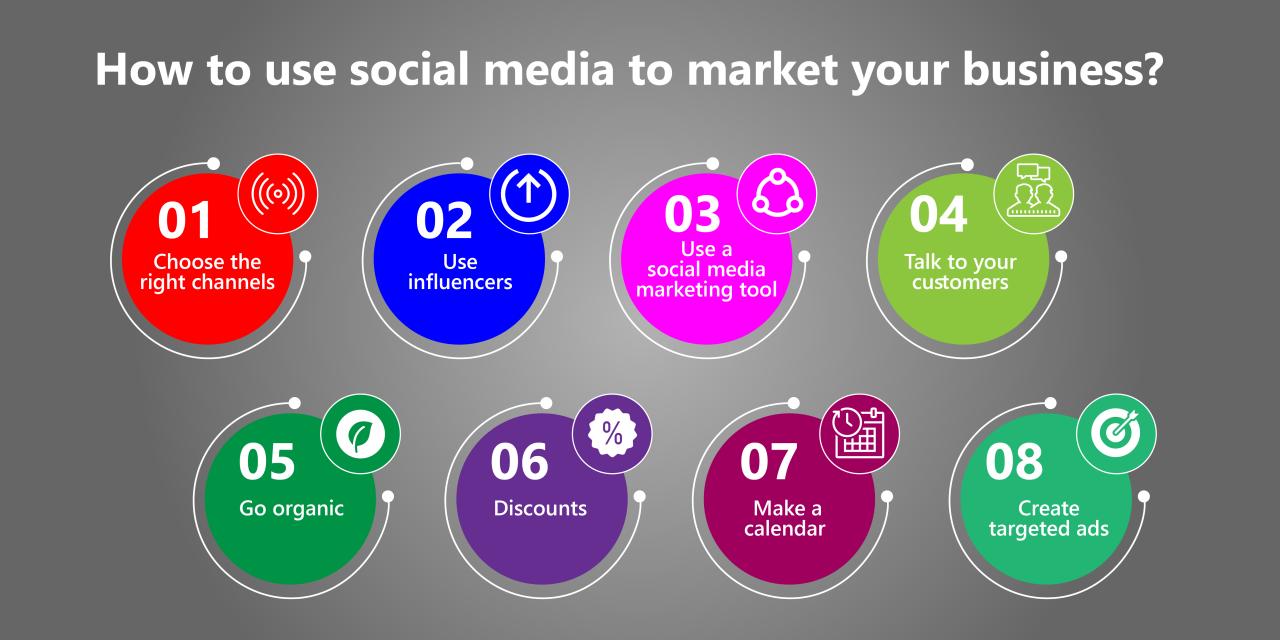
Source: talisma.com
Live social media offers a powerful way to connect with audiences in real-time, fostering engagement and building brand loyalty. Successful strategies leverage the unique strengths of each platform to achieve specific goals, whether it’s boosting sales, increasing brand awareness, or cultivating a strong community. Analyzing successful campaigns provides valuable insights into best practices and effective techniques.
The following examples illustrate how different brands have successfully utilized live social media across various platforms to achieve their marketing objectives. Each example highlights key strategies and demonstrates the impact of a well-planned and executed live stream.
Successful Live Social Media Campaign Examples
| Platform | Campaign Goal | Key Strategies | Results |
|---|---|---|---|
| Instagram Live | Increase brand awareness and drive traffic to a new product launch. | Partnered with a popular influencer known for their beauty expertise. The influencer hosted a live tutorial showcasing the new product, interacting with viewers in real-time and answering their questions. A countdown timer and reminders were used in the days leading up to the live stream. A link to purchase the product was included in the live stream description and pinned to the comments. | Significant increase in Instagram followers, high engagement during the live stream (measured by comments, likes, and shares), and a substantial spike in website traffic and product sales immediately following the live stream. The influencer’s reach significantly amplified the campaign’s impact. |
| Facebook Live | Improve customer service and address common product concerns. | A company representative hosted a weekly Q&A session on Facebook Live, addressing frequently asked questions about their products and services. They proactively solicited questions from their audience in advance and during the live stream. The session was interactive and conversational, fostering a sense of community and trust. | Improved customer satisfaction scores, reduced negative feedback on social media, and increased positive brand sentiment. The regular Q&A sessions built a loyal following and established the company as responsive and approachable. |
| YouTube Live | Generate excitement for an upcoming event and build anticipation. | The organizers of a music festival hosted a series of YouTube Live interviews with the headlining artists. These interviews were promoted extensively on other social media platforms and included exclusive behind-the-scenes content. The live streams were archived and promoted afterwards to extend their reach. | Increased ticket sales, higher social media engagement, and increased brand visibility. The behind-the-scenes content provided a unique perspective and created a strong sense of anticipation for the event. The archived videos continued to drive traffic and engagement long after the live streams concluded. |
Common Mistakes to Avoid in Live Social Media
Live social media offers incredible opportunities for businesses to connect with their audience in real-time, but neglecting crucial aspects can quickly turn a potential success into a PR disaster. Failing to plan adequately, ignoring technical issues, and neglecting audience engagement are just a few of the common pitfalls that can derail even the most well-intentioned live stream. Understanding these mistakes and proactively addressing them is vital for a successful broadcast.
Poor Audio and Video Quality
Substandard audio and video quality can significantly detract from the viewer experience, leading to disengagement and a negative perception of your brand. Poor lighting, blurry images, distracting background noise, or a microphone with poor reception can all contribute to this problem. Viewers are less likely to stick around if they can’t hear you clearly or see what you’re presenting.
This can damage your brand’s credibility and reduce the overall impact of your message. To avoid this, invest in good quality equipment, conduct thorough technical checks before going live, and ensure your environment is optimized for clear audio and video capture. Consider a dedicated microphone and a well-lit space free from distracting noises.
Lack of Engagement with the Audience
A one-way conversation is rarely successful in the interactive world of live social media. Failing to interact with your audience – responding to comments, questions, and concerns – makes the stream feel impersonal and unengaging. This can lead to low viewership, limited reach, and a missed opportunity to build relationships with potential customers. Active engagement fosters a sense of community and encourages viewers to stay tuned.
To combat this, dedicate a team member to monitor comments and questions in real-time, ensuring timely responses and addressing viewer inquiries. Plan interactive elements like polls or Q&A sessions to encourage participation.
Inadequate Promotion and Planning
Launching a live stream without sufficient promotion is akin to throwing a party and not inviting anyone. Poor planning, including a lack of clear objectives, a weak call to action, and insufficient promotion across your social media channels, will result in low viewership and a wasted opportunity. Without a well-defined strategy, your live stream lacks direction and purpose, leading to a less impactful experience for viewers.
To avoid this, develop a comprehensive promotion strategy that includes targeted advertising, email marketing, and social media posts leading up to the event. Clearly define the goals of your live stream and create a detailed plan outlining the content, timing, and interactive elements.
Ignoring Technical Difficulties
Technical issues, such as internet connectivity problems, software glitches, or equipment malfunctions, can disrupt the flow of your live stream and frustrate viewers. Being unprepared for such eventualities can lead to a negative experience for your audience and damage your brand’s reputation. A sudden cut-off or prolonged technical difficulties can cause viewers to abandon the stream and negatively impact your brand perception.
To mitigate this risk, conduct thorough technical rehearsals before going live, ensuring all equipment is functioning correctly and your internet connection is stable. Have a backup plan in place, such as an alternative internet connection or a pre-recorded segment to bridge any unexpected interruptions.
Unclear Objectives and Call to Action
A live stream without a defined purpose and a clear call to action is like a ship without a rudder – it drifts aimlessly without achieving anything meaningful. Failing to set specific objectives and guiding viewers towards a desired outcome – whether it’s driving sales, increasing brand awareness, or generating leads – renders your efforts ineffective. Viewers will leave without a clear understanding of what you want them to do.
This translates to missed opportunities for conversions and engagement. To address this, establish clear objectives for your live stream before you begin. Define what you want to achieve and create a compelling call to action that guides viewers towards the desired outcome. This could be anything from visiting your website to signing up for a newsletter or making a purchase.
Guide for Preventing Technical Difficulties During a Live Stream
Effective preparation is key to preventing technical issues. This involves a multi-faceted approach encompassing equipment checks, environmental considerations, and contingency planning. First, conduct a full technical rehearsal at least 24 hours prior to the live stream, simulating the entire process. This allows for the identification and resolution of potential problems. Second, ensure a stable internet connection with sufficient bandwidth.
Consider using a wired connection instead of Wi-Fi for better reliability. Third, test all equipment, including cameras, microphones, lighting, and software, to confirm optimal functionality. Fourth, have backup equipment readily available in case of malfunctions. Finally, establish a communication plan for your team to handle any unexpected technical issues during the live stream. Having a designated technical support person can be invaluable.
Different Live Streaming Platforms and Their Features
Choosing the right live streaming platform is crucial for reaching your target audience effectively. The platform you select will significantly impact your viewers’ experience, your ability to interact with them, and the overall success of your live stream. Several platforms offer varying features and capabilities, making it essential to understand their strengths and weaknesses before making a decision.
This section compares and contrasts three popular live streaming platforms: YouTube Live, Facebook Live, and Instagram Live. We’ll examine their key features, advantages, and disadvantages to help you determine which platform best suits your needs.
YouTube Live Features
YouTube Live is a powerful platform ideal for established channels with a dedicated audience and those focused on longer, more in-depth content. Its features cater to a broad range of content creators.
- High-quality streaming: Supports high-resolution video streaming, offering a professional viewing experience.
- Extensive analytics: Provides detailed analytics on viewer engagement, allowing for data-driven optimization.
- Monetization options: Offers various monetization features, including Super Chat and channel memberships, allowing creators to earn revenue from their streams.
- Integration with YouTube features: Seamless integration with other YouTube features like community posts and playlists enhances viewer engagement and content discoverability.
Facebook Live Features
Facebook Live is known for its ease of use and strong emphasis on community interaction. It’s a great choice for businesses and individuals aiming to connect directly with their followers.
- Simple interface: Easy to set up and use, even for beginners.
- Strong social integration: Directly integrated with Facebook’s social features, enabling easy sharing and interaction with your network.
- Live comments and reactions: Provides real-time feedback and interaction with viewers through comments and reactions.
- Limited analytics: Offers basic analytics compared to YouTube Live, but sufficient for understanding basic engagement metrics.
Instagram Live Features
Instagram Live excels in creating a more intimate and immediate connection with followers. It’s particularly well-suited for shorter, more spontaneous streams and visual content.
- Mobile-first approach: Optimized for mobile devices, making it easy to broadcast from smartphones.
- Ephemeral nature: Streams disappear after they end, encouraging viewers to watch live.
- Interactive features: Allows for interactive features like Q&A sessions and polls.
- Limited analytics and monetization: Offers limited analytics and lacks sophisticated monetization options compared to YouTube Live.
Platform Advantages and Disadvantages
The optimal platform depends heavily on your content and audience. YouTube Live is best for longer, high-quality content with monetization potential and a built-in audience. Facebook Live prioritizes community engagement and ease of use, making it suitable for businesses and individuals seeking direct interaction. Instagram Live excels at fostering a quick, intimate connection through short, engaging streams, particularly for visually-driven content.
Ending Remarks
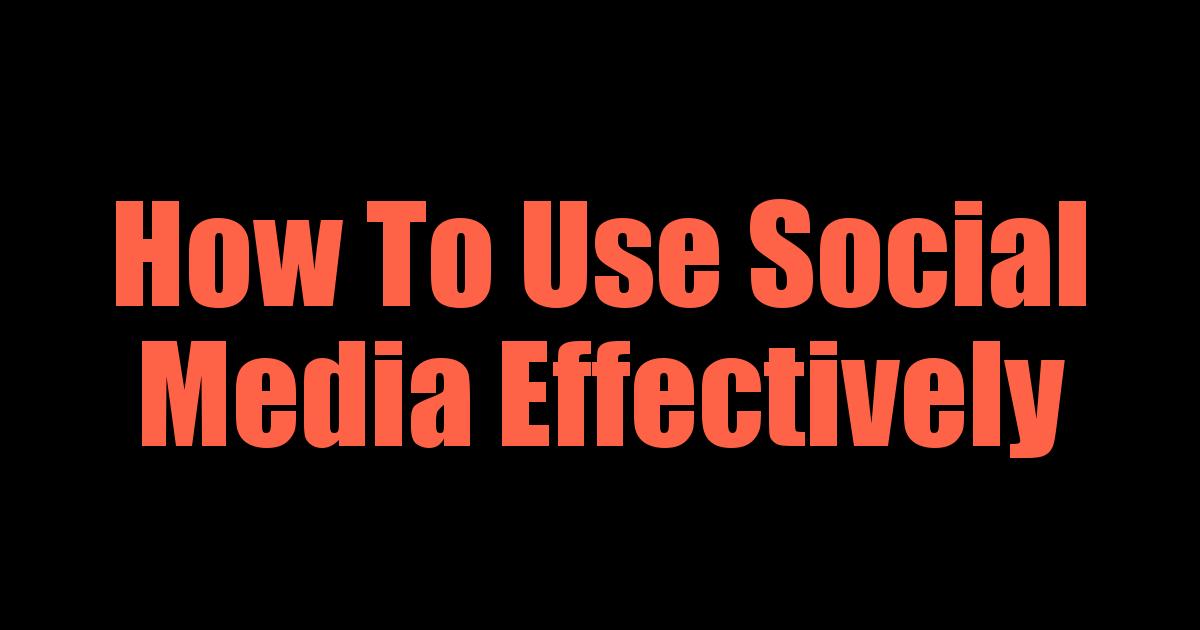
Source: coleddy.com
Mastering live social media isn’t a one-size-fits-all approach, but by following the strategies Artikeld here – from meticulous planning and engaging interactions to insightful post-stream analysis – you can significantly improve your results. Remember, consistent effort, audience understanding, and a willingness to adapt are key to creating truly impactful live streams. So, grab your camera, plan your content, and get ready to connect with your audience in a whole new way!
Top FAQs: Live Social Media Right Way
What’s the best time to go live?
The optimal time depends on your target audience’s online activity. Analyze your audience’s engagement patterns to determine when they’re most active.
How do I handle technical issues during a live stream?
Have a backup plan! Test your equipment beforehand, and if problems arise, address them calmly and transparently with your audience. A brief apology and a quick fix can maintain engagement.
How can I promote my live stream effectively?
Use a multi-platform approach! Promote across your social media channels, email list, and website. Create engaging visuals and countdown timers to build anticipation.
What if I get negative comments?
Respond professionally and empathetically. Acknowledge the comment, but don’t get into an argument. Focus on addressing concerns constructively.


